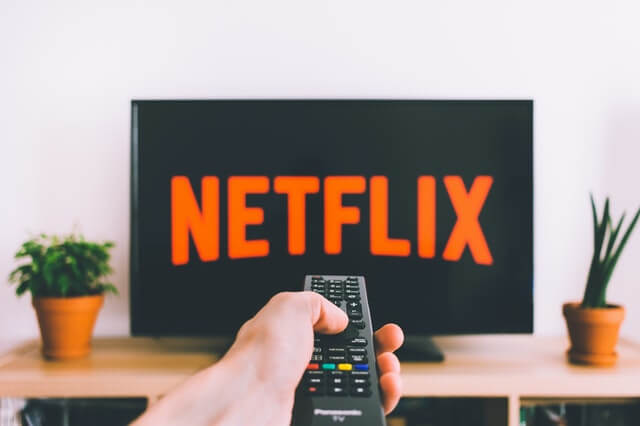Online Streaming – Is Regulation Required?

________________________________________________________________________________
This Blog is written by Yashendra from National Law University, Delhi. Edited by Saradarasagnya Oleti.
________________________________________________________________________________
INTRODUCTION
Since 2016 India has witnessed a new revolution in the field of entertainment arena. The movie screening and shows have gotten relaunched in the online market. The Internet has espoused a new way of watching tv shows and films. This new revolution could be attributed to the advent of some global players like Netflix, Amazon prime video in India. These companies have usurped the mind of youths by providing the movies and shows on demand. It has also helped in globalization of the entertainment industries of many countries.
The cheap data packs have further helped in inducing the youths towards the OTT platforms. Eventually when the demand had increased, these intermediaries also started streaming their own produced shows and movies. These shows are far away from censorship and are available without any restrictions. Unregulated market has also brought various Indian companies to squeeze some profit. It is also expected that the OTT market is expected to cross USD 500 billion by 2023.
Some of the contents made available by these companies are being taken as inconvenient and this gave birth to the issue of regulating them. This article analyses the efficacy of such regulation vis-a-vis Right to freedom of expression.
SIGNIFICANCE OF THE DEVELOPMENT
The OTT industry has taken further strides in the COVID lockdown. When people were requested to be enclosed in their houses, these on-demand available contents have become the easiest way of entertainment. While many find it easier and more convenient, others found it obnoxious due to the uncontrolled contents. This has now taken the shape of debate whether there is a need of the regulations or not.
IMPACT
Unarguably, artistic freedom has resulted in frequent show of questionable contents in order to make the scenes real. But many times, this freedom has been negatively influenced and such influences are not acceptable to a section of society.
STATUTORY PROVISIONS
The conventional sources of entertainment are completely regulated through different legislations. The Cinematograph Act 1952 provides for a statutory body, Central Board of Film Certification (CBFC), to sanction the cinematograph films for public exhibition. But when the act is read in light of the Cinematograph (Censorship) Rules 1983, it becomes clear that the act does not cater to online streaming and the same stand has been taken by Karnataka HC in Padmanabh Shankar vs Union of India [1]. On the other hand, Cable Television Network (Regulation) Act, 1995 [2] mainly governs the cable network operators and cannot be used to regulate the OTTs as these operate without their own satellite and networks.
The prominent legislation governing the digital media and related areas is Information Technology Act 2000 [3]. The IT act under section 79 puts onus on the intermediaries to show due diligence while discharging their duties under the act but as these OTT platforms offer self-generated contents along with outside content, these platforms cannot be said as intermediaries for the purpose of IT Act.
While all these acts do not cover the OTT platforms, there are some provisions which authorize the government agencies to prohibit them from showing harmful or obnoxious contents, which can be termed as post-regulation. The IPC provisions, POCSO act and IT act gives such power to the government. The IT Act empowers the Central Government to block access of public to any objectionable material on the electronic platform.
CASE LAWS
As the OTTs gradually swept away the entertainment market, many petitions have been filed in various HCs and SC. But the HCs took more or less the same stand that the current OTTs cannot be regulated under the current provisions and the government also maintained their status only as intermediaries to be made liable under IT Act.
ANALYSIS
The current laws can not entirely regulate the OTT platforms as these are different from other conventional platforms. Unlike cinema multiplexes, these do not provide any show or movie meant for public exhibition and also use networks of telecom service providers and internet service providers to make the content available to the user. Being different from conventional platforms make them undesirable for comprehensive enactment by the government. The contents are also not available for the general public by these platforms itself and they are made available according to the demand of the user. So, in a way these contents are pulled contents and not pushed like a cable service. Moreover, the contents are generally watched by the users on mobile phone or on computers and hence is a private viewing as opposed to the public viewing of cinema theatres and TVs which could have harmful effects.
In addition to these differences, India’s long experience of censorship and regulatory frameworks do not permit similar censorship to online content also. It is quite evident in years that the regulation or censorship of contents are more dependent on the morals of the officers of such regulators. CBFC, a film certification board, has been much criticized for the selective censorship of the films. Sometimes, it has censored or suggested changes which were unnecessary and even frustrated the sense with which something is being delivered to the public. These suggested cuts are also overturned by the Film Certificate Appellate Tribunal on appeals. Such suggestions have only resulted in the excessive delay and the negative criticism of having such disputable contents which further affects the business and right to choice of the public. Some movies never hit the theaters due to the amendment demands of CBFC. Such powers to suggest changes on the individual notions of morality is derogatory to the Constitution of India. The Supreme Court has also delved this issue in detail and recognized that a specific standard of censorship is required to be formulated in this regard to not curb the growth of an artist’s individuality and freedom of expression [4].
In the backdrop of criticisms of CBFC, the government has even set up a committee under veteran Filmmaker Shyam Benegal to suggest the reforms in the current censoring process, more in consonance to other countries’ systems. It has suggested limiting the board’s role only to certify a film and give the requisite ratings. The committee categorically states that it should not act as the moral custodian of the people. But these suggestions are still being deliberated upon by the government.
The same is also suggested for the online contents that these should mainly provide a rating to movies/shows and for this they can adhere to the principle of self-regulations. This has been done through the Code Of Best Practices For Online Curated Content Providers which is a short of self-regulatory framework signed in 2019 by some major content providers except Amazon Prime video and TVF play. This code has also provided for having internal grievance cells for the OTT platforms where the complaints regarding contents can be filed by the users.
Moreover, it also allows the artistic innovations and creativity to showcase it without any harmful impairments to the message that they intend the films and shows to have. Even the constitution of India guarantees such freedom of speech and expression unless it harms the fellow citizens or society at large through the creativity as provided within article 19. But the prohibition on the grounds that the contents “hurts the pride of the people of the nation”, or “hurts the religious sentiments of a community”, or that “it defies Indian sensibility”, or “it is against the Indian ethos or culture”, or “it is woman-oriented” are clearly untenable. For such grounds are not covered by Art. 19 (2) of the Constitution of India.
In other jurisdictions too, online contents are not regulated by the Government. Countries like Singapore, Australia etc. which even regulate, do not simply censor the contents and have the provision of mandatory ratings to the contents and parental locks for the mature contents. India can also develop similar certification guidelines for the OTT platforms.
Furthermore, the Internet is an ever-changing landscape. It is not possible to regulate the contents available on the Internet, one can always get the contents from here or there, so censoring any film or other contents does not prevent it from emanating on the internet and is easily made available on some sites. Moreover, these sites keep changing their identity making it even tough to block them. On legal grounds too, such regulations result in the dilution of the Rule of law. Similarly, if certain content is not available or a censored version is available in India but uncensored versions of such content is available elsewhere, there are various aggregator applications which facilitate the viewing of such uncensored content in India.
CONCLUSION
OTT platforms are increasingly being used for entertainment. They gain popularity owing to the large content availability along with the option to choose from them. The viewers can choose what to watch, when to watch and where to watch. The content available is also uncensored and unregulated. This non-regulation has also created a lot of controversy over the content. The government is deciding on the regulation. The author has presented various views and arguments which makes it undesirable to censor the content. But still there is need of guidelines for the uniform certification ratings which will give the users the right to decide whether to watch or not to watch any particular content. This could also be done through a self-regulatory code subject to legal action against non-compliance.
REFERENCES
[1] Mr. Padmanabh Shankar Vs Union of India – Writ Petition No 6050 of 2019 (c) PIL.
[2] Cable Television Network (Regulation) Act, 1955.
[3] Information Technology Act, 2000.
[4] K. A. Abbas Vs Union of India and Anr – 1971 AIR 481, 1971 SCR (2) 446.

